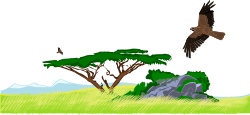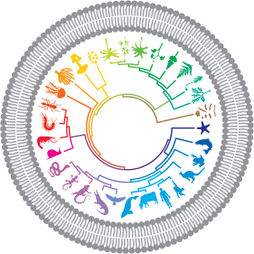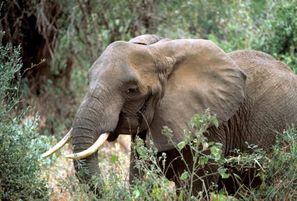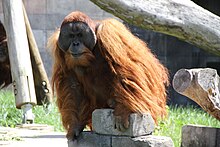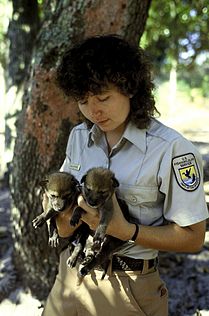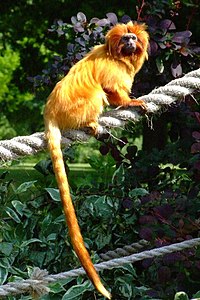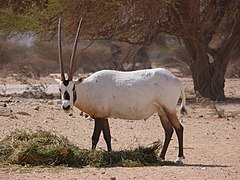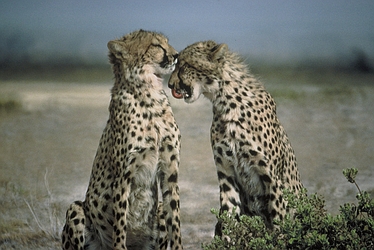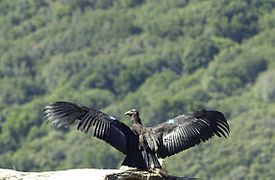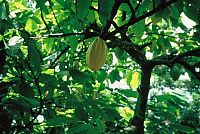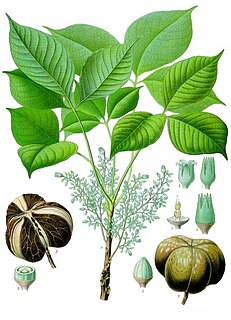Biodiversity
Contents
- 1 Welcome to the Biodiversity Site...
- 2 What is biodiversity?
- 3 The Need to maintain Biodiversity
- 4 Reasons why species have become endangered
- 5 Methods of protecting endangered species
- 6 The Mauritian Biodiversity
- 7 Educational Videos
- 8 Quiz on Biodiversity
- 9 Assignment
- 10 Student's Corner
- 11 Student Using Learning Tools and working on activities
- 12 Additional Resourceful Articles
 Welcome to the Biodiversity Site...
Welcome to the Biodiversity Site...
This Biodiversity course will help you to
|
The biodiversity of the planet is the result of evolution. In any ecosystem, there is a huge interdependence between species and it is clear that biodiversity is essential to maintain ecological balance and stability.
Another part of biodiversity is the extent of genetic diversity with species and populations. Such genetic diversity is also essential for the stability and survival of a species.
 The Need to maintain Biodiversity
The Need to maintain Biodiversity
Biodiversity is in decline – mostly as a result of a variety of man’s activities. It is now well understood that it is important to try and halt this decline – indeed, conservation measures are needed, not only to halt the decline, but to try and restore as much biodiversity as possible.
The need to maintain biodiversity may be considered in terms of biological reasons or reasons from a human perspective :
Biological reasons
As mentioned above, it is essential that biodiversity is maintained if ecosystems (and the whole planet) are to remain ecologically balanced and stable.
In addition, evolution has resulted in diverse gene pools within populations – the maintenance of these gene pools and the genetic diversity of species is extremely important if species are to be prevented from becoming extinct.
Human reasons
Other species of animals and plants provide an important resource for humans.
These may be
- For use in agriculture, either as potential food supplies or to be crossed with existing agricultural species to improve features, such as yield, hardiness or disease resistance.
- To provide possible medicines
- To encourage tourism in some countries - ecotourism
- From an ethical point of view, if human activity has been largely responsible for the decline in biodiversity, then humans have an obligation to reverse this decline. Equally, it is important to try and maintain the current level of biodiversity for future generations.
 Reasons why species have become endangered
Reasons why species have become endangered
In African ecology, the elephant is regarded as a keystone species. In 1930 there were estimated to be 5 – 10 million African elephants. By 1979 the number was reduced to 1.3 million and when it was officially added to the endangered list in 1989, the numbers had fallen to around 600,000 - less than 10% of its numbers earlier in the twentieth century.
A number of factors contributed to this dramatic decline in numbers:
- Habitat loss – elephants eat a great deal and need a large amount of habitat. During the twentieth century, the human population of Africa has increased massively and, as a result, humans and elephants have become competitors for living space. The forest and savannah habitats of the elephant have been reduced as humans have used timber for fuel and building and land for growing crops and grazing livestock.
- When humans and elephants live in close proximity, various problems arise – elephants raid crops and, on occasion, will rampage through villages. Farmers and other residents regard them as something of a pest and shoot them.
- Hunting – this has been a major cause of the decline in elephant numbers. Elephants became prized trophies for big-game hunters and, more recently, they have been killed for their ivory tusks. Ivory is easily caved and regarded as a beautiful material – most of the ivory carving in the world takes place in Japan and other countries in Asia. At one stage, ivory was more expensive than gold – indeed, it became known as ‘white gold’. Hunting continues for the global ‘bushmeat’ trade (see http://www.bushmeat.org/IMAP/species/L_africana.htm ).
- Poaching – it is no longer legal to hunt elephants in most African countries. However, the high prices paid for ivory meant that elephants continued to be killed by poachers. At its peak, the poachers became highly organised, using automatic weapons, vehicles and even planes to herd and kill huge numbers at a time. The biggest elephants were usually targeted (because they have the largest tusks) which meant that it was generally the adults that were killed, leaving young elephants without any adults to learn from. As a result, the social structure of the elephant populations broke down and many of the elephant groups left were leaderless juveniles.
Summary about African elephants
• IUCN Red list status = vulnerable
• CITES Listing Appendix I except Botswana, Namibia, South Africa and Zimbabwe, Appendix II
• Habitat loss – competition between humans and elephants for space, trees and grazing leading to loss and fragmentation of the elephant habitat
• Hunting and poaching – for trophies, ivory, protection of villages and for bushmeat
Other species which are endangered include the orangutan.
You are required to read the information on the following sites:
http://www.un.org/works/environment/animalplanet/orangatang.html
http://www.panda.org/about_wwf/what_we_do/species/our_solutions/endangered_species/great_apes/orangutans/index.cfm
http://www.orangutan.org/facts/orangutanfacts.php
 Methods of protecting endangered species
Methods of protecting endangered species
There are a variety of ways in which attempts are being made to protect endangered species and prevent them becoming extinct. The extent to which these attempts are successful is somewhat variable.
Zoos
One way of protecting endangered species of animals is to capture some from the wild and place them in captivity. In this way, it is possible to make sure that they are well fed, protected from predators and disease and isolated from other potential problems which might be encountered in their natural habitat. If such animals are simply placed in zoos, the zoo is really acting as an ‘ark’ and little is actually being achieved in terms of maintaining or increasing populations in the wild. If the animals will breed in captivity, then it is possible to maintain or
even increase numbers. If such captive-bred individuals can be returned to their natural habitat, then it might be possible to increase numbers in the wild, thereby preventing the endangered from becoming extinct.
Captive breeding has a number of advantages:
- it is possible to monitor the health of the mother and the development of the fetus during the pregnancy.
- sperm and eggs can be obtained from the captive individuals
- these can be stored in a frozen form
- it allows the possibility of artificial insemination
- also in-vitro fertilisation
- fertilised embryos may be implanted in surrogate mothers (which might even be of different species)
- there is the possibility of international co-operation and the transfer of breeding individuals between different zoos
- it allows the keeping of breeding records and the genetic relatedness of captive individuals
Golden lion tamarin
You are required to visit the following sites:
http://www.hrw.com/science/si-science/biology/animals/glt/index.html
http://nationalzoo.si.edu/ConservationAndScience/EndangeredSpecies/GLTProgram/
Arabian oryx
You are required to visit the following site:
Although some species of animals have been bred successfully in captivity and released back into the wild, with other species this has not been straightforward and a number of problems have been encountered. It has been found that some species simply do not breed successfully in captivity, whilst, in some cases, there have been problems in releasing animals that have bred in captivity.
Captive Breeding
There are a number of reasons why animals do not always breed successfully when in captivity:
- They are no longer living in their natural habitat
- The conditions experienced in captivity can cause stress and behavioural changes
- The stress can disrupt normal reproductive cycles and breeding behaviour
- They often have little choice of mate and may reject the chosen mate
Release of captive-bred individuals into the wild
Problems which reduce the success rate of releasing captive-bred individuals include :
- Habitat destruction (usually as a result of man’s activities) might mean that there is very little suitable habitat available in which to release the animals
- Having been in captivity, animals might not find it easy to move around in their natural habitat
- It may not be easy for them to find enough food – especially if they have been used to being fed in captivity
- They may not be able to communicate with other members of their species in the wild and may not integrate into social groups
- They may be susceptible to diseases in the wild
Some of these problems are being overcome by making sure that conditions within zoos are as close to the natural habitat of the species as possible. Contact with humans is kept to an absolute minimum and individuals can be ‘acclimatised’ in cages before they are actually released into their natural habitat.
Cheetah
http://nationalzoo.si.edu/ConservationAndScience/EndangeredSpecies/Cheetah/
Californian condor
You are required to visit the following sites:
http://bna.birds.cornell.edu/BNA/account/California_Condor/CONSERVATION_AND_MANAGEMENT.html
Detailed overall review of Captive Breeding and Reintroduction
http://darwin.bio.uci.edu/~sustain/bio65/lec23/b65lec23.htm
Botanic gardens
Endangered species of plants can be grown in botanic gardens. Clearly, it is possible to create ideal growing conditions – either outdoors or in glasshouses, when it is possible to control very carefully the growing conditions. This applies to the availability of light, nutrients, water and the atmospheric conditions.
Within such botanic gardens, it is also possible to propagate endangered species – either by growing from seed or by some means of vegetative propagation, such as cuttings. Techniques of tissue culture also allow large numbers to be produced very quickly.
This allows the possibility of re-introducing endangered species of plants into their natural habitat.
You are required to visit the following sites:
- Botanic Gardens Conservation International
- Varied links to botanic garden websites
http://nature.ac.uk/browse/580.73.html
- Royal Botanic Gardens, Kew, London, UK
http://www.rbgkew.org.uk/conservation/index.html
Seed banks
Many plants produce seeds which are very long-lived and large numbers can be stored in a relatively small space. Such a collection of seeds is referred to as a seed bank. The life span of such seeds can be extended if they are kept in carefully controlled conditions – especially in an atmosphere of low oxygen levels, moisture and temperature.
Given that the seeds will contain all the genetic material of any given species, it also means that the gene pool of that species is being maintained.
Clearly, if the seeds of endangered species are stored in this way, such seeds can be germinated at any time and plants can be grown in Botanic gardens or restored to the wild. Some species produce seeds which have a limited longevity (e.g. cocoa, rubber, coconut) – keeping their seeds in seed banks is not possible. Such plants would need to be maintained in botanic gardens.
http://www-saps.plantsci.cam.ac.uk/osmos/os24.htm
http://www.rbgkew.org.uk/msbp/
National Parks (and other protected areas)
Many countries have designated areas, such as National Parks, which are set up to conserve rare / endangered species and maintain important habitats. Often, legislation is passed to ensure that such areas are protected under the law.
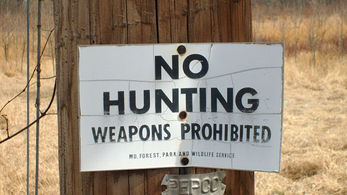
The ways in which National Parks protect their resident species include :
- Wardens, rangers and volunteers can be used to patrol the parks
- Access by humans can be restricted – often footpaths are created and maintained to avoid interference with wildlife habitats
- Agricultural activities can be strictly controlled – traditional farming methods can be encouraged
- Industrial activities and mining can be limited and controlled
- The building of roads, dwellings and other developments can be strictly controlled
- Visitor Centres can be established to educate the general public in the importance of conservation within the Park – and elsewhere
- Wildlife can be protected directly e.g. 24 hour surveillance of nests /breeding sites
In addition to National Parks (which usually occupy large areas of land), different countries can also create other categories of conservation areas if they contain species or habitats which need some form of protection
http://www.wcmc.org.uk/protected_areas/data/sample/iucn_cat.htm
 The Mauritian Biodiversity
The Mauritian Biodiversity
Mauritius has an area of 1,865 km2, of which 30% is considered forested. The area of good quality native forest, (i.e. that with more than 50% native plant cover, Page & d’Argent 1997), is estimated to cover less than 2% of the island (NEAP 1999, MWF unpublished). The rest consists of plantation forestry, deer-ranches or highly degraded vegetation invaded by alien plant and animal species. As a result Mauritian biodiversity is amongst the most threatened in the world.
There are 671 species of indigenous flowering plant recorded in Mauritius, of which 311 are endemic (Mauritius has eight endemic plant genera), and 150 are endemic to the Mascarene Archipelago (Page & d’Argent, 1997; Strahm, 1994). 77 of these indigenous species are classified as extinct. Of the extant flowering plant species, about 35% are already classified as threatened as per IUCN criteria (Bachraz & Tezoo, 1997).
Furthermore, 24 of the 52 native species of forest vertebrate that were known to have occurred on Mauritius and adjacent islets are now extinct, including the Dodo (Raphus cucullatus), a giant parrot (Lophopsittacus mauritianus) and two species of giant tortoise (Cylindrapsis spp.). Many of the extant species are threatened.
To read more about the Mauritian Biodiversity, please click on the following link: http://www.gov.mu/portal/goc/moa/file/chap24a.pdf
 Educational Videos
Educational Videos
- Video 1
- Video 2
Video 2: What is Biodiversity?
| Practice Questions
In this activity you will have the opportunity to find out and practice some questions pertaining to Biodiversity
|
Your are required to carry out the following assignments:
|
Student's Corner
Please use this section for discussions, Sharing of ideas, and links (By clicking edit on the top right, and then choosing rich editor before starting to type). Note that you need to sign in to be able to give your views. For more editing information, please see the guideline page.
Write here:
Student Using Learning Tools and working on activities
Additional Resourceful Articles
Some further readings which you can do are:
